by Rebecca Furer for Teach It
TEACHER'S SNAPSHOT
Topics:
Business & Industry, Invention & Technology, Reform Movements, Social Movements, Transportation, Women, Women's Rights
Grade:
High School
Historical Background
Early bicycles, also sometimes called velocipedes, were heavy, uncomfortable, and difficult to steer. High-wheel bicycles were developed in the 1870s and were lighter and faster, but quite dangerous. Albert A. Pope manufactured the first American-built bicycles in Hartford in 1878, but it was not until the development of the “safety bicycle” (with two equal-sized wheels and improved brakes) in the 1880s and 1890s that the national bicycle craze really took off and women started cycling in large numbers. The timing coincided with the first wave of the women’s rights movement in the United States.
D1: Potential Compelling Question
D1: POTENTIAL SUPPORTING QUESTIONS
- What technological developments made bicycling more accessible to women?
- How did the bicycle craze of the 1890s affect women in the United States?
- What were the different public reactions to women who adopted “rational dress” and/or took up cycling in the 1890s?
- Did the invention of the bicycle lead to social reform or was the bicycle an outlet for already-changing norms?
D2: TOOL KIT
Things you will need to teach this lesson:
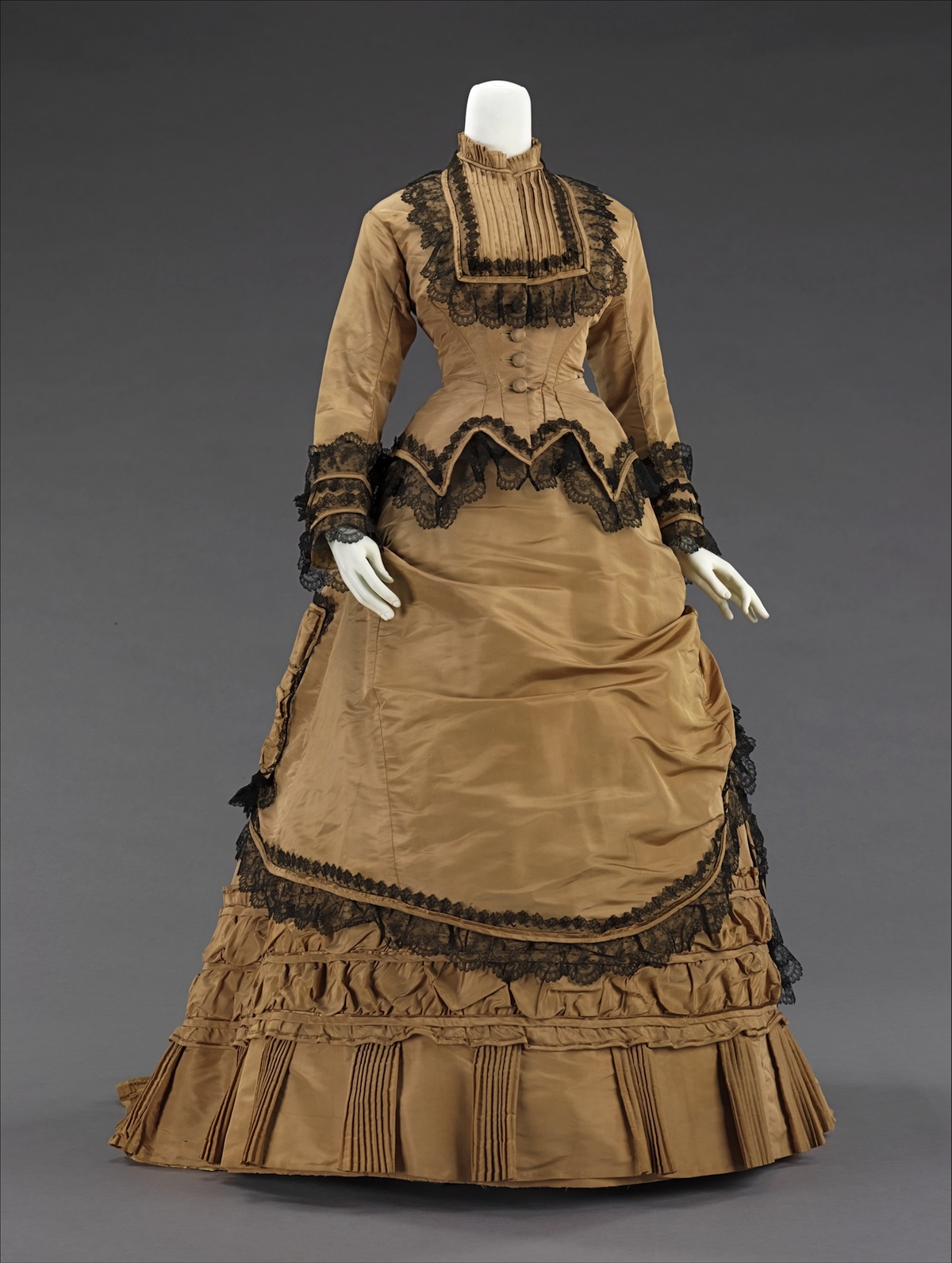
Walking Dress, ca. 1870-75, silk – Brooklyn Museum Costume Collection at The Metropolitan Museum of Art, Gift of the Brooklyn Museum, 2009; Dick S. Ramsay Fund, 1956.
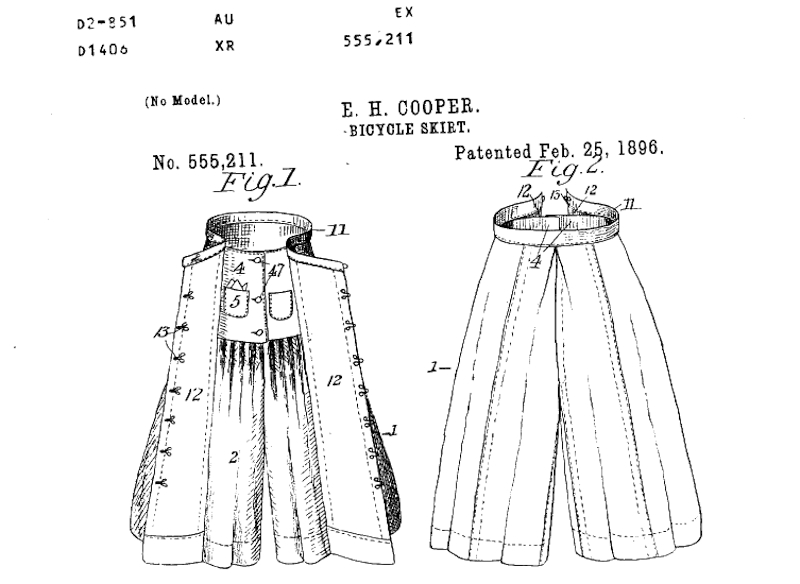
Patent number US555211A, Bicycle-skirt, Ella H. Cooper, Meriden, CT, Application date: July 18, 1895 – Patent date: February 25, 1896 – United States Patent Office.
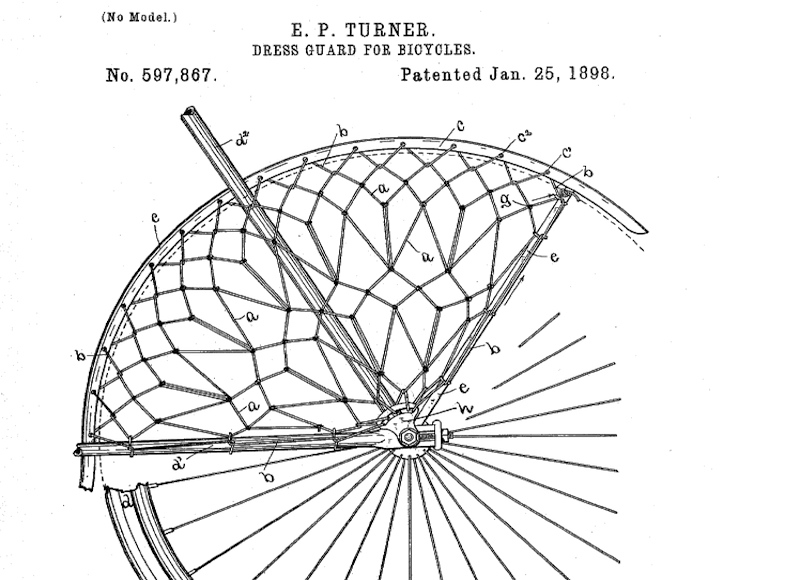
Patent number US000597867, Dress-guard for bicycles, Emerson P. Turner, Norwich, CT, Application date: February 18, 1897 – Patent date: January 25, 1898 – United States Patent Office.
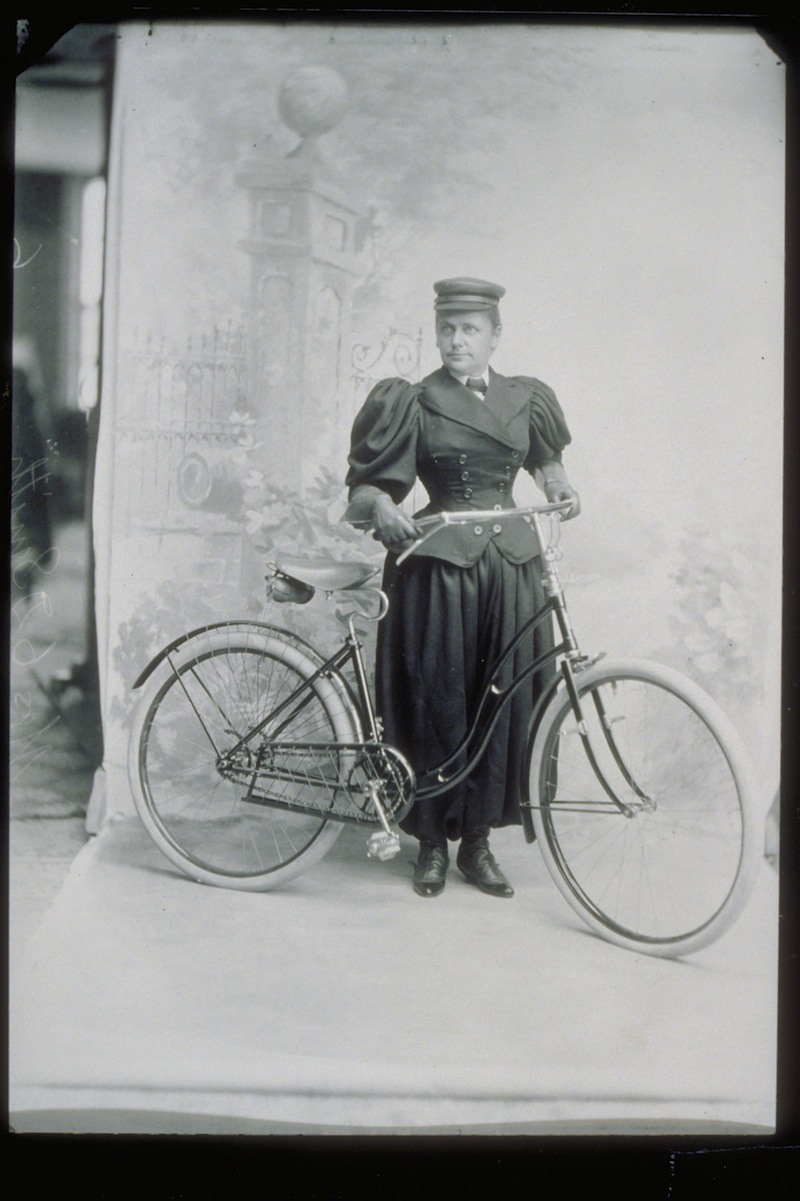
Portrait of Mrs. C. D. Smith with bicycle, ca. 1890-1899. Photographer Everett Augustus Scholfield – Mystic Seaport.
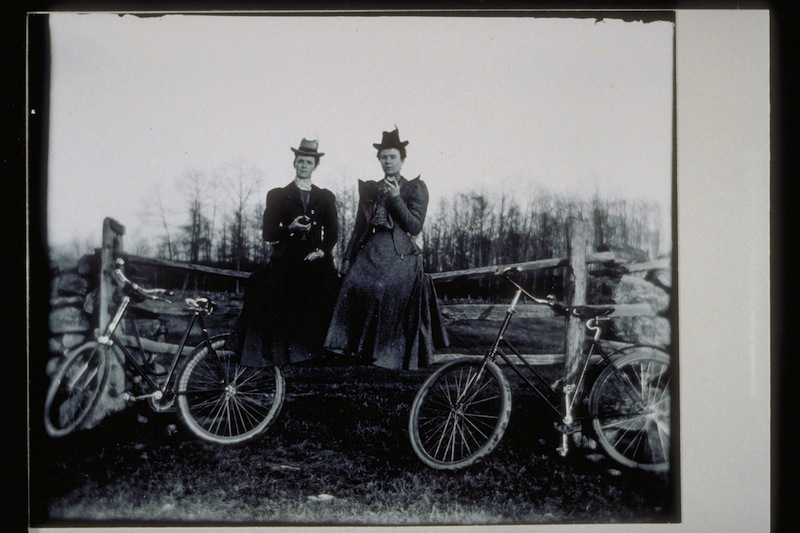
Two women sit on a split rail fence, ca. 1890-1899. Photograph by Edward H. Newbury – Mystic Seaport.
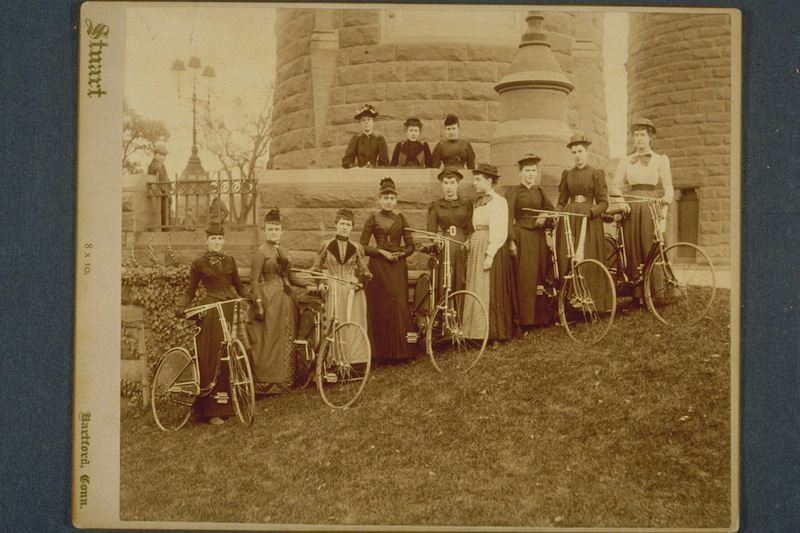
Ladies Cycle Club of Hartford, 1890. Photograph by Charles T. Stuart – Connecticut Museum of Culture and History.
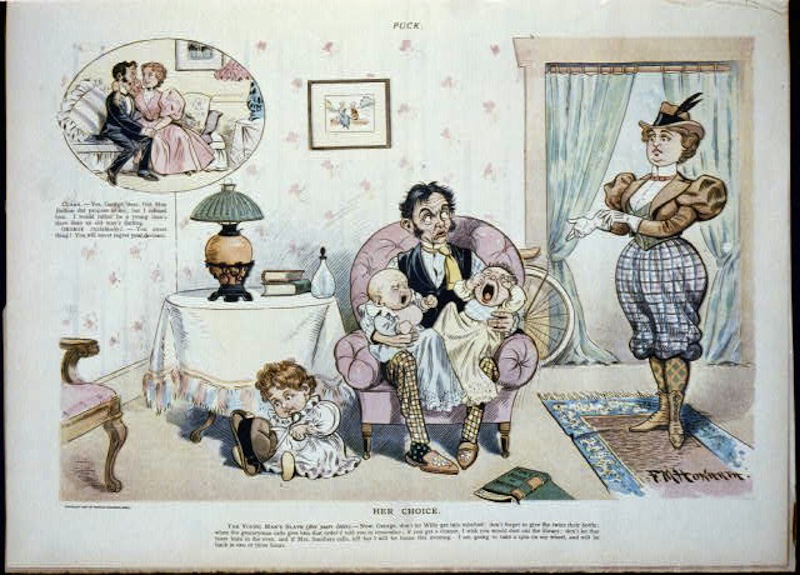
“Her Choice.” Illustration from Puck magazine, July 7, 1897, p. 16 – Library of Congress, Prints and Photographs Division.
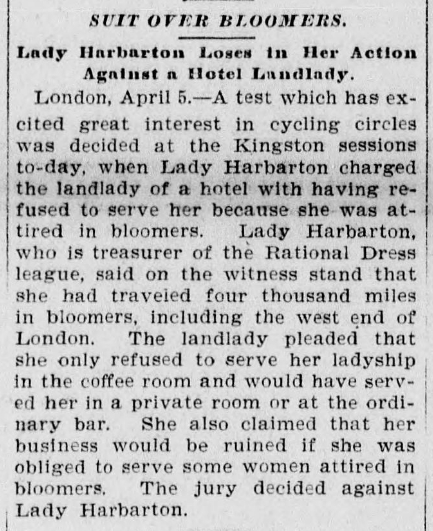
“Suit over Bloomers.” The Daily Morning Journal and Courier, New Haven, Connecticut, April 6, 1899 – Chronicling America: Historic American Newspapers, Library of Congress.
Although the legal case in question was heard in England, it was covered on the front page of this newspaper from New Haven, Connecticut.

Excerpt from journalist Nellie Bly’s interview with Susan B. Anthony. Originally published in “Champion of Her Sex,” New York Sunday World, February 2, 1896, p. 10.

Library of Congress Primary Source Analysis Tool Worksheet
D3: INQUIRY ACTIVITY
1) As a short introduction, start by displaying the image(s) of the 1870-75 walking dress. Have students make observations, always backing up their comments with evidence they can see (e.g. “What do you see that makes you say this dress is fancy?” “The lace and the silk fabric.”) Then ask for reflections based on what they see—what they think about the woman who might have worn a dress like this and what her life might have been like. If it does not come up in discussion, you may want to prompt with the question of whether this kind of “walking dress” would be practical for what today we might consider an “active lifestyle.”
2) Next, break the class into two groups, having each group examine one of the patent documents, either online or in hard copy. Have students determine the who, what, where, when, how, and why of each patent, including what problem the patent-seeker was trying to solve. Have one or two representatives from each group present their patent briefly to the other half of the class.
Together as a group, ask students to share their thoughts or questions regarding the patents and how they might connect to the time period in general.
3) Next, display or distribute the three photographs showing Connecticut women and their bicycles. Using the Library of Congress Analyzing Photographs & Prints process, ask students to observe, reflect, and question. What clues do these images give us about the role of the bicycle in these women’s lives?
4) Together as a class, examine and discuss the satirical illustration from Puck and the “Suit over Bloomers” article. Use evidence from these sources, as well as the earlier sources, to address the supporting question: What were the different public reactions to women who adopted “rational dress” and/or took up cycling in the 1890s?
5) Conclude the activity by displaying or reading out loud the excerpt from journalist Nellie Bly’s interview with Susan B. Anthony in 1896 (pdf of the quote above).
“Let me tell you what I think of bicycling… I think it has done more to emancipate women than anything else in the world. I stand and rejoice every time I see a woman ride by on a wheel. It gives woman a feeling of freedom and self-reliance. It makes her feel as if she were independent.”
“And bloomers?” I suggested, quietly.
“Are the proper thing for wheeling,” added Miss Anthony promptly. “It is as I have said — dress to suit the occasion. A woman doesn’t want skirts and flimsy lace to catch in the wheel. Safety, as well as modesty, demands bloomers or extremely short skirts. You know women only wear foolish articles of dress to please men’s eyes anyway.”
Discuss students’ reactions to these statements, coming from one of the best-known leaders of the women’s rights movement at the time.
D4: COMMUNICATING CONCLUSIONS
- Imagining themselves in the 1890s, students will design a full-page newspaper advertisement for bicycles (or bicycle clothing) targeted—at least in part—to women. They should draw on some of the persuasive imagery or ideas from the primary sources examined. To expand students’ background knowledge, you may wish to have them read some additional writings about women and bicycling from the time (see “Things to Do,” below).
- Students will conduct online research using newspapers, periodicals, or secondary sources to compare the reaction to the “rational dress” movement in the 1890s to that of other “controversial” fashion issues in later history: miniskirts in the 1960s, changing styles of sportswear for women, school uniform requirements, t-shirts and free speech, etc.
- Students will create a timeline of the women’s rights movement in the United States, starting with the 1848 Seneca Falls Convention and continuing to the present. The timeline should incorporate relevant technological and fashion innovations, as well as other political and social events and landmarks.
ADDITIONAL RESOURCES
Place to GO
Connecticut is full of great rails-to-trails bike routes—find one near you!
For a long trail with some great history, try the Farmington Canal Heritage Trail.
Find early bicycles, printed advertisements, and more materials relating to women’s history on exhibit and in the Waterman Research Center at the Connecticut Museum of Culture and History.
Things To DO
Look at some original books and articles about women and cycling written in the 1890s:
“Expansion.” The Daily Morning Journal and Courier. (New Haven, Conn.), August 19, 1896. Chronicling America: Historic American Newspapers. Library of Congress.
Willard, Frances Elizabeth. A Wheel within a Wheel: How I Learned to Ride the Bicycle, with some Reflections by the Way. New York: F.H. Revell Co., 1895.
Ward, Maria. Common Sense of Bicycling: Bicycling for Ladies. New York: Brentano’s, 1896.
Fenton, W. H. “A Medical View of Cycling for Ladies.” The Nineteenth Century. May 1896, p. 796-801.
See an original bicycling outfit, about 1895-1905, from the Connecticut Museum of Culture and History collection.
Websites to VISIT
Connecticut Women’s Hall of Fame: The site includes lots of great information on the achievements of Connecticut women, educational resources, and a section on the Connecticut Women’s Heritage Trail.
National Women’s History Museum: An online museum with aspirations to a physical presence in Washington D.C., the site features online exhibits, educational resources, and a women’s history blog
Articles to READ
“Pedaling the Path to Freedom: American Women on Bicycles” from the National Women’s History Museum
“Women on the Move: Cycling and the Rational Dress Movement” from the blog Cycling History
“Women on Wheels: The Bicycle and the Women’s Movement of the 1890s” by Peter Zheutlin, AnnieLodonderry.com



